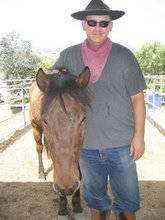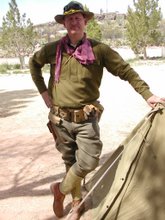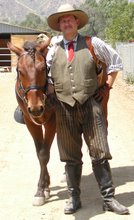Just as there are extreme sports today, there were extreme sports in past times and one of the most prominent during the Middle Ages and Renaissance was jousting. It is said that jousting originally developed as a means of mounted soliders/primarily knights to learn and practice the skills and techniques necessary for combat. Essentially, the primary fighting methods used by heavily armored knights involved charging at the enemy with a heavy lance and once closing into close-quarters combat, dropping the lance and fighting with sword, axe or mace. Over time, these practice sessions also evolved into a way for knights to demonstrate their fighting skills and thus jousting became a more formal contest with detailed rules and etiquitte.
Unlike going into "real" combat, jousters used lances with blunt tips and often the secondary weapons were also blunted- the whole idea was to defeat your opponent but not kill him. Also, the main event in a formal joust usually consisted of three passes (or "tilts" or "lances") between two opponents and the results scored thereof. Unfortunately for Henry II, he insisted on going for a fourth "lance" and the result was his death due to a splinter from a shattered lance penetrating the eye slit in the visor of his his helmet and penetrating his brain.
Jousts could also include combat with other weapons, either mounted or dismounted and these contests were also run on a three-round system and scored.
For more information go
HERE.

Depiction of a late 13th century joust in the
Codex Manesse
King Henry II (or Henri II) of France- Killed while jousting when a splinter from a lance penetrated the eye slit on his helmet, penetrating his eye and driving into the brain, subsequently killing him.

To give an idea of the potential of shattering lances, here's an illustration. Those splinters fly with some force and it's not to hard to imaging what could happen if it penetrates an exposed portion of the body.

Here's an example of the knight's typical heavy armor and barding for the horse found typical of the 16th Century. This set is a bit more ornate than what would be be typically encountered in the tiltyard (most of the time, anyway).














No comments:
Post a Comment